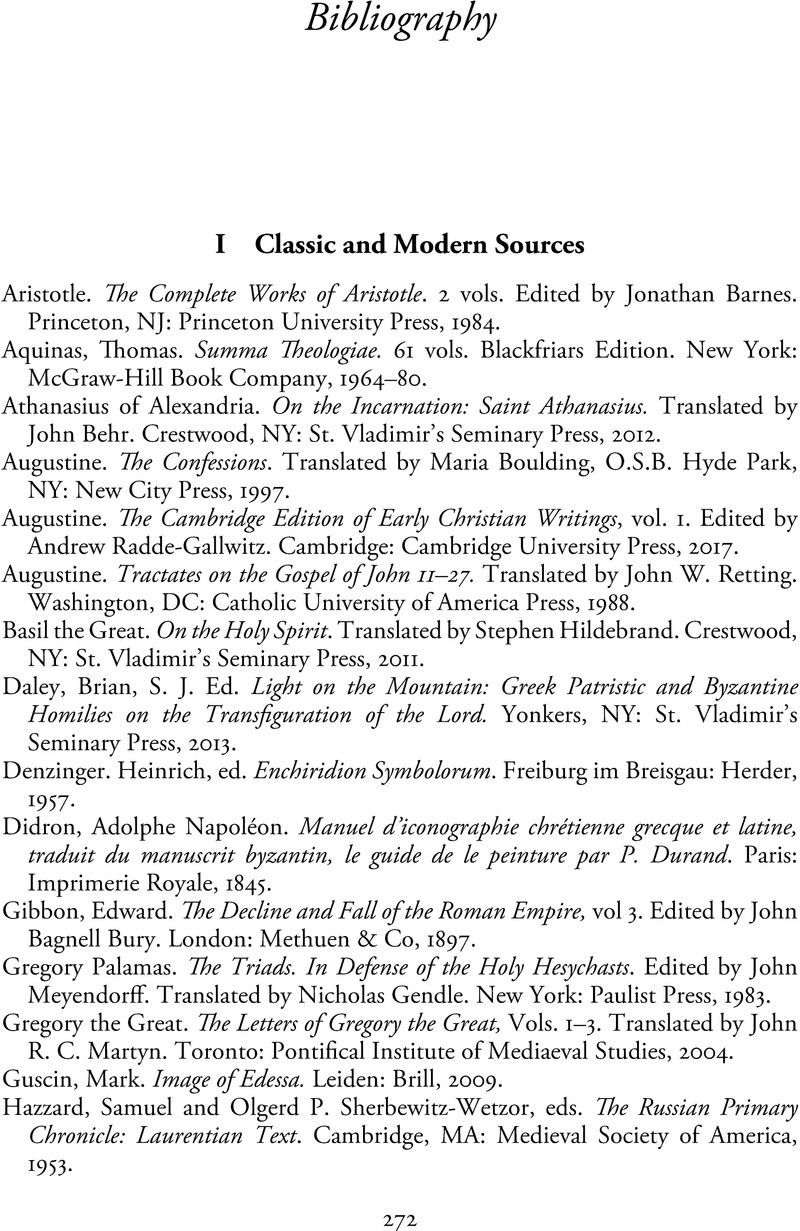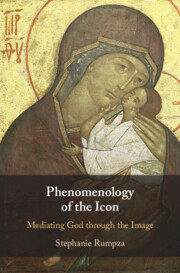Book contents
- Phenomenology of the Icon
- Phenomenology of the Icon
- Copyright page
- Contents
- Figures
- Foreword
- Acknowledgments
- Abbreviations
- Introduction: The Seashell Problem
- Chapter 1 Understanding the Icon
- Chapter 2 Resonance
- Chapter 3 The Window
- Chapter 4 Representation
- Chapter 5 Presence
- Chapter 6 Substitution
- Chapter 7 Performance
- Chapter 8 The Love Letter
- Bibliography
- Index
- References
Bibliography
Published online by Cambridge University Press: 17 August 2023
- Phenomenology of the Icon
- Phenomenology of the Icon
- Copyright page
- Contents
- Figures
- Foreword
- Acknowledgments
- Abbreviations
- Introduction: The Seashell Problem
- Chapter 1 Understanding the Icon
- Chapter 2 Resonance
- Chapter 3 The Window
- Chapter 4 Representation
- Chapter 5 Presence
- Chapter 6 Substitution
- Chapter 7 Performance
- Chapter 8 The Love Letter
- Bibliography
- Index
- References
Summary

- Type
- Chapter
- Information
- Phenomenology of the IconMediating God through the Image, pp. 272 - 291Publisher: Cambridge University PressPrint publication year: 2023

